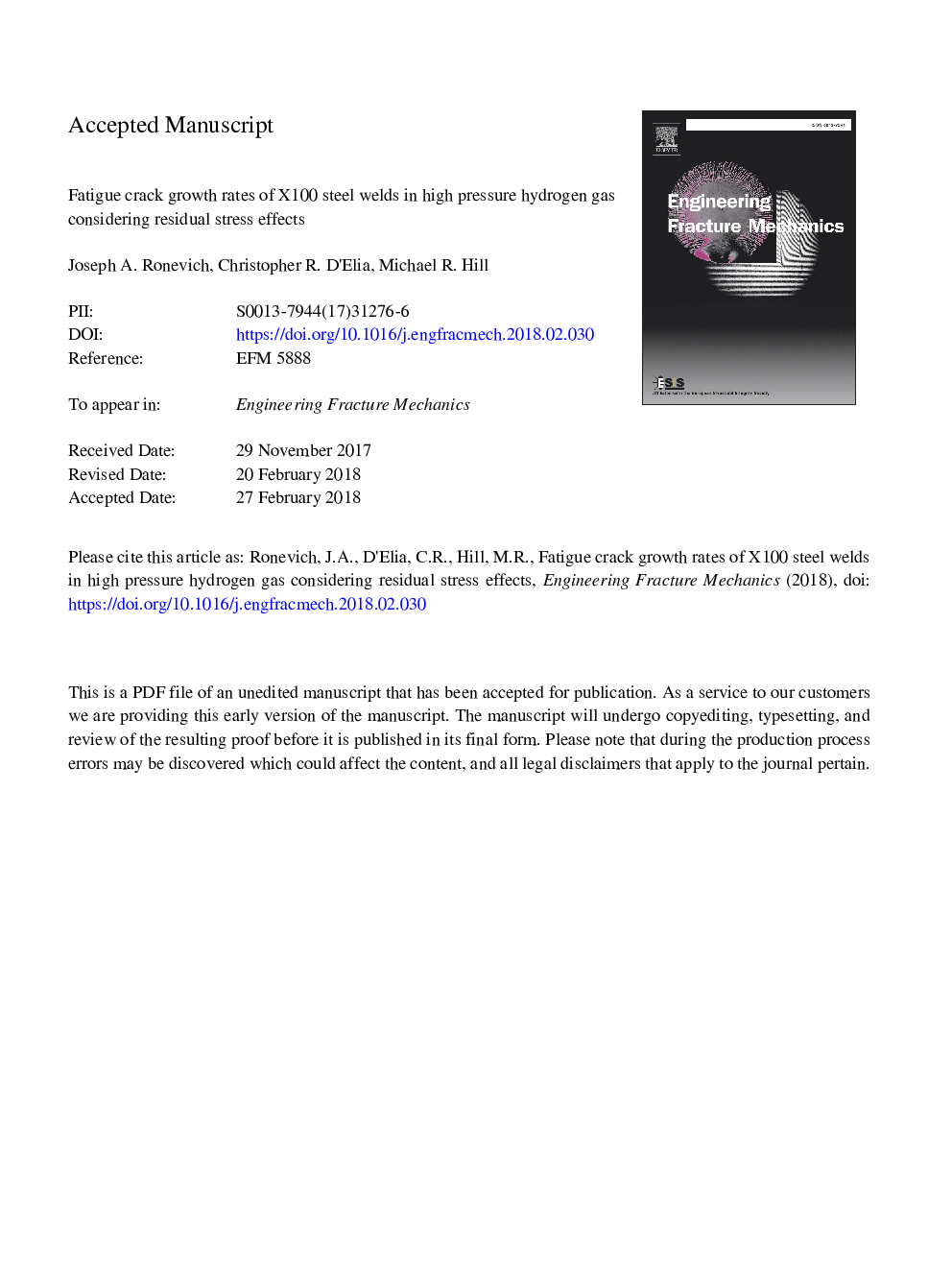| Article ID | Journal | Published Year | Pages | File Type |
|---|---|---|---|---|
| 7168866 | Engineering Fracture Mechanics | 2018 | 15 Pages |
Abstract
Fatigue crack growth rate (FCGR) data were measured in high pressure hydrogen gas versus stress intensity factor range (ÎK) in specimens removed from a X100 welded steel pipe. Three distinct regions of the pipe weld were examined: base metal, weld fusion zone, and heat affected zone. Tests were performed at a load ratio (R) of 0.5, frequency of 1â¯Hz, and at a hydrogen gas pressure of 21â¯MPa. Tests were also performed in air at 10â¯Hz as a reference. Fatigue crack growth rates were observed to be over an order of magnitude higher for tests performed in hydrogen compared to the rates from tests in air. Residual stress measurements were collected on identical specimens cut from the base metal, weld, and heat affected zone to account for their influence on measured FCGR data. The slitting method provided residual stress and residual stress intensity factor (Kres), the effect of which was removed from the FCGR data using Knorm in order to provide a more direct comparison of crack growth resistance of the base metal, weld and heat affected zone. Prior to accounting for residual stress, FCGR in hydrogen gas appeared to be highest in the weld fusion zone. After accounting for residual stress effects, the weld fusion zone FCGR data converged to the base metal FCGR data, which underscores the importance of accounting for residual stress effects when assessing fatigue performance.
Related Topics
Physical Sciences and Engineering
Engineering
Mechanical Engineering
Authors
Joseph A. Ronevich, Christopher R. D'Elia, Michael R. Hill,
